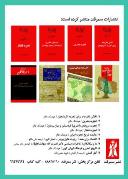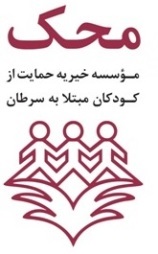ШӘШ§ШұЫҢШ® ЩғЩҮЩҶ ЩҲ ШЁШ§ШіШӘШ§ЩҶ
History of IranвҖҷs Wind Energy Technology
- ШӘШ§ШұЩҠШ® ЩғЩҮЩҶ ЩҲ ШЁШ§ШіШӘШ§ЩҶ
- ЩҶЩ…Ш§ЫҢШҙ Ш§ШІ ШіЩҮ ШҙЩҶШЁЩҮ, 07 Ш§ШұШҜЩҠШЁЩҮШҙШӘ 1389 12:41
- ШЁШ§ШІШҜЫҢШҜ: 4683
В
В
Most text books that one reads about politics or administration, begin with Darius I of the Achaemenid Dynasty and his admirable system of ruling a vast empire that stretched from China to Greece. In books about wind energy technology, too, one reads that the technology was first developed by ancient Iranians, the first windmills having been found in Sistan Province, in southeast of Iran.
After the discovery of the wheel, the windmill was the brightest invention of the mankind. It is argued by some scholars that the windmill preceded the wheel, but this seems unlikely and in any case irrelevant. What matters is that the two inventions had reciprocal effects on one another and one helped to improve the other and vice versa.
It is not clear when exactly human beings began to use the wind force but it can be said with a strong degree of certainty that Iranians first managed to use the wind force to grind wheat and draw water from wells, a few thousand years before Christ.
Sistan, and the Khaaf Plain in particular, have winds that last 120 days or so and it is the very existence of this wind that must have forced the people of the region to find ways of controlling and using it.
The winds called вҖңthe winds of HaratвҖқ blow from April till July/August and are thought to originate in the Pamir on the Iran-Afghanistan border and they blow at their highest speed in the Sistan region.
In 1905 a group of British officers working on the Iran-Afghanistan border to determine its exact path reported that for 16 days a wind had blown at a speed of 140 km/hour and that within four days the wind had killed 200 camels.
The first Iranian windmills date back to millenniums before Christ, and the first were probalby made and put to use in a region spreading from Sakestan or Sistan to Ghahestan or Koohestan, but no written evidence are presently at hand.
The first time Iranian windmills are documented was at the time Omar was the Caliph. The Famous Moslem scholar and historian, Massoudi, writes about an Iranian Zoroastrian slave who worked for a man named Moghair-ibn-shoair. The slave who was known as Abu LoLo, made a grievance to Omar that his master took two Dirhams from him for each day he worked:
вҖңвҖҰ Omar asked вҖҳWhat works can you do?вҖҷ The slave said вҖҳPaining, carpentry and forging.вҖҷ Omar said вҖҳWhat you pay to Moghaireh is not unfair considering what you can doвҖҷ. Abu LoLo left grumbling. Another day he passed Omar, on his way. Omar said to him вҖҳI hear you have claimed to be able to make a mill that works with the windвҖҷ. Abu LoLo said вҖҳI will make you a mill that people shall talk much about it.вҖҷ When he left, Omar said вҖҳThis man threatened me.вҖҷвҖқ (Abu LoLo finally killed Omar with a dagger).
In a well-known book written by an unknown person and titled вҖңHistory of SistanвҖқ one reads вҖңвҖҰ (they have made) mills that run by the force of the wind and produce flourвҖҰ and they have produced similar wheels to draw water form wells (to transfer) to gardens and lands where they farmвҖҰ they make great use of the wind.вҖқ
Iranian windmills had vertical axles and horizontally turning vertical вҖҳbladesвҖҷ, that is flat vertical blades that are pushed by the wind to turn the axle to which they are fixed and thereby turn a millstone. The blades are vertical and very high and as they are pushed by the wind they turn the axle which thus transfers the force and the movement to rotate the grinding flat stone over a fixed stone below it.
Notebaar, the renowned Dutch scholar who has made extensive studies on the subject of windmills, writes вҖңThis is the way windmills are made in Sistan: First a small tower is built.
The windmill consists of two parts. The lower part is where the stones are to be found which grind the wheat through the turning movement of the upper millstone. In the upper part there is an axle which is turned by the wind. Through this movement the upper millstone at the lower part of the mill, is rotated.вҖқ
It can be said with great certainty that through the Moslem Empire (Andalusia in Europe) and through the Crusades the design of the Iranian windmill reached Europe, where the idea was improved to form the vertical вҖңsailsвҖқ or the Dutch type windmill but the Iranian design continued to be used in some parts of the world, such as Poland, down to the 19th century.
In 12th century AD, Europe was faced with a population explosion and the use of watermills proved to be inadequate, so was the use of mills that were run by human or animal force. Therefore, windmills became increasingly popular all over Europe.
The Iranian type windmill had a simple structure but it had low efficiency, and therefore the Dutch type windmill with вҖңsailsвҖқ that turned in a vertical plane were first developed around 1180 AD in the northern parts of France, on the North Sea and gradually spread across Europe because of the higher efficiency.
By 1580 they became a common sight all over Europe and reached the eastern coasts of the Black Sea. Today one can see the Dutch type windmill in many parts of the world notably in Holland itself the home of the Dutch type windmill.
In Iran, however, the local type continued to be used and even today they can be seen in certain parts of Khorrasan and Sistan provinces, particularly south of Khaaf, in the plain of Zozan.В





